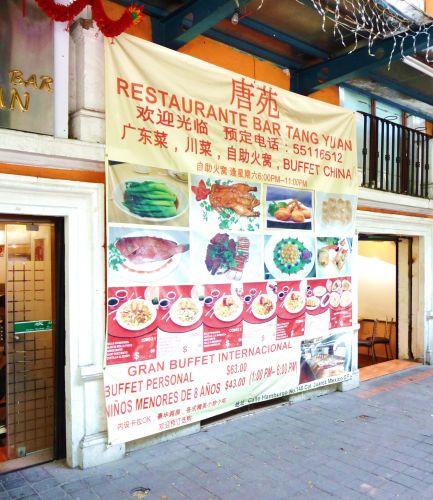During the early twentieth century, the Chinese were one of the largest immigrant groups in Mexico, particularly in the North, where they had great success as merchants. Unfortunately, their accomplishment was followed by an anti-Chinese movement, which included racist legislation and even some incidents of riots, desecration of property, and jailing of Chinese for no reason. This monolithic timepiece, on Calle Bucareli in the Colonia Juarez in Mexico City, is known as "the Chinese clock." It is a replica of one that was given as a gift to the Mexican people by the Emperor of China in 1910, to commemorate the hundredth anniversary of the Mexican Revolution. Anti-Chinese hooligans destroyed it in 1913. The replacement was set in its place in 1921.
Jose Luis Bárcenas, the immigration lawyer who arranged all my paperwork in Mexico, tells me that in recent years, once again the Chinese are among the fastest-rising groups of immigrants in the city. The D.F.'s Chinatown is only one block long, but the Chinese are scattered throughout the entire city.
Their emergence has heralded a preponderance of restaurants featuring ultra-greasy Chinese buffets where, at your own peril you can serve yourself all you can eat for about sixty pesos (less than five dollars at the current exchange rate). These places are perhaps a form of revenge for the earlier anti-Chinese movement. Click here for an earlier post about the best Chinese restaurant in Mexico City.







